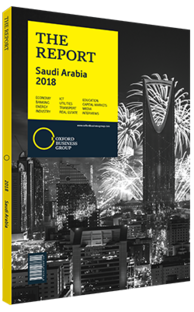Abdullah Al Sagheir, Acting Governor, General Authority for Small and Medium Enterprises: Interview

Interview: Abdullah Al Sagheir
In what ways do small and medium-sized enterprises (SMEs) contribute to the overall economy?
ABDULLAH AL SAGHEIR: Given that until 2016 Saudi Arabia had no government agency dedicated to developing the SME ecosystem, it is not surprising that the sector is yet to be fully developed. The GDP contribution of SMEs currently stands at 22%, lower than other countries we benchmarked against – such as the EU – where SMEs contribute up to 58% of GDP. With a 64% employment contribution compared to over 67% in the EU, Saudi Arabia positions itself in a more competitive manner – albeit other countries such as Chile, South Korea and Indonesia reach much higher levels of around 90% of employment. What is interesting about Saudi Arabia is that the gap between employment and GDP contribution is the widest we have seen among the countries we benchmarked. We believe low productivity is the key determinant of this gap. Therefore, the sector is currently facing two main issues: low GDP contribution and low productivity.
Saudi Arabia has recently joined the pool of countries monitored by the Global Entrepreneurship Monitor at Babson College in the US. Although we scored modestly in most categories in 2017, we scored high in terms of self-perception of Saudis towards entrepreneurship, including perceived opportunities and entrepreneurial intentions. Two more interesting facts were highlighted. In 2016, 38% of start-ups were owned by females and the rate of growth of SMEs in Saudi Arabia outperformed both the overall economy and the large companies’ growth rates. These are positive factors that we plan to capitalise on.
How is the SME policy reform agenda being developed and implemented?
AL SAGHEIR: We are looking at innovative ideas to achieve the Saudi Vision 2030 target of lifting SMEs’ contribution to GDP from 20% to 35%. In the context of a growing Saudi economy, and aiming to be among the top 15 economies globally, this implies that the GDP value of SMEs will need to grow at a faster rate than the overall economy and the countries Saudi Arabia is competing with, ultimately needing to almost quadruple in the next 14 years. This is a huge leap forward that not only requires a more mature ecosystem of organisations supporting and providing incentives to SMEs, but also truly innovative policy measures. We are launching a National SME Strategy that outlines our authority’s strategy and targets, while also identifying the role of other stakeholders in the ecosystem such as universities, schools, NGOs and government agencies to develop a holistic intervention methodology.
What areas do you anticipate bring the most attractive opportunities for SME investment?
AL SAGHEIR: Local content and government procurement are the most attractive opportunities, cutting across all sectors characterised by high consumption and low local content rates. Saudi Arabia is the third-largest purchaser of defence products and services worldwide, and the potential for developing local defence industries is huge. Privatisation is also a major opportunity now. Saudi Vision 2030 is shifting a traditionally government- driven economy towards the private sector. In this respect, demographic trends make large service sectors, such as education and health, attractive investment destinations. Furthermore, emerging sectors such as mining, entertainment, sports and maritime will grow faster than traditional sectors like oil and gas, and retail.
Even religious tourism – although it has existed in the country for decades – has now become more attractive because of its economic and commercial dimension. It is estimated that by 2030 religious tourism will attract over 30m people to Saudi Arabia per year. New entrepreneurs should therefore focus on these sectors to achieve exponential growth.
You have reached the limit of premium articles you can view for free.
Choose from the options below to purchase print or digital editions of our Reports. You can also purchase a website subscription giving you unlimited access to all of our Reports online for 12 months.
If you have already purchased this Report or have a website subscription, please login to continue.

